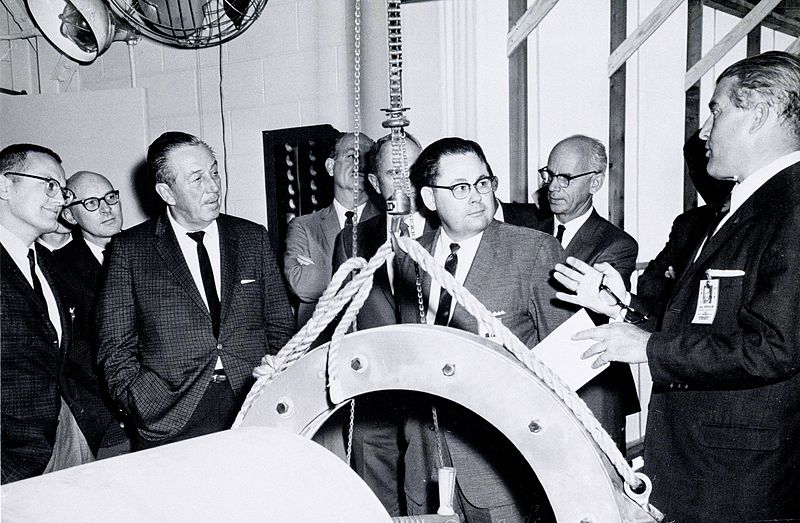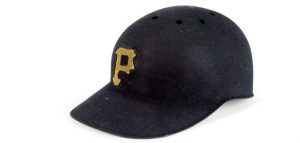Families throughout the United States faced hard times during the late-1930s. People were still recovering from the effects of the Great Depression, unfulfilled promises from President Roosevelt’s New Deal, and unemployment.1 During these financially troubled times, two dreamers, brothers Roy and Walt Disney, were on a mission to continue to produce quality animation on a fixed budget. After Fantasia‘s disappointing initial grossing, Disney Animation Studios’ debt was edging toward $3 million, which led to Walt Disney cutting all of his animators’ salaries. Although Roy Disney believed that this would undermine everything the two had built, he realized the only alternative was to sell their films through a franchise or file for bankruptcy, and so he agreed to the arrangement, unaware of the wrath that would follow.2

Tensions rose as animators also noticed a change in Walt Disney’s attitude toward them. The once cheerful man who was full of magic soon lost that touch, becoming distant to the people around him. Walt began to take all the credit for the animations that were being produced, and his employees soon realized that their pay was much lower than Disney’s salary. His ‘in-betweeners’ and clean up men were making $20 at the most, while his animators, ranging from amateurs to professionals, made between $75 and $300 weekly. Walt brought home a salary five times what his highest paid animators were bringing home.3
These pay disparities led his beloved animators to walk out on the company. On May 28, 1941, employees were greeted by hundreds of their coworkers waving signs preventing them from entering the studio. Although the exact number of employees who went on strike differs between sources, it is estimated that roughly one-third of the 1200 employees went out that morning. For the first few days of the strike, employees exchanged jokes and banter. The animators held up picket signs with clever illustrations that depicted their true emotions. One that struck deep to the studio was a picture of Walt Disney’s face in a cartoon style with crossed eyes and the caption “I can’t see why they’re unhappy.”4 Walt refused to give in to the demands of his employees, because he did not feel that they needed the increase in pay. This firm stance left the strike to go on for five whole weeks, tearing apart the company’s unity. This tension led Walt to leave for South America to take some time away from work, while he let go almost half of his team. After a bank representative for the company stepped in to review the case, the studio was sustained in favor of the animators leading to the dispute being settled. Though a treacherous three and a half months had passed, work finally resumed at the studio in Burbank, California with 694 employees on September 16, 1941.5

Just as everything seemed to be falling into place, the unimaginable happened. On December 7, 1941, the Japanese Navy Air service struck down on the United States naval base in Pearl Harbor sending the United States into World War II. Panic set in for the animators again as the cost of the films being produced during this time put a damper on the company’s overall budget.6 During this time, Walt and his company were sought out to produce cartoons for the armed services as morale builders. They also used half of the animation studio to house antiaircraft troops that were fighting during World War II. Although the company seemed to be taking on too much, this engagement would inspire Walt to create a few propaganda short films and war posters of his own that would speak to the people of the United States. Of all of the animation produced during the war, the most notable piece was Der Fuehrer’s Face, an animated short film in which Donald Duck dreams he is working in a German factory, all while ridiculing Adolf Hitler. The combination of housing troops in the studio, producing short films that expressed the idea of America’s freedom, and the efforts to inspire those fighting for the United States broaden the brand as a whole, showing every single American know what the Disney company stood for at the time.7
Though Walt himself did not find very creative success regarding his work toward the government propaganda animation and posters, it paid off very well for the company, raising its reputation and generating profits. The animation studio’s contributions to America during the World War II brought smiles with their comedic satire to families struggling to find hope as their loved were out serving their country. Soon after, they produced notable works such as Bambi (1942), Song of the South (1946), and Cinderella (1950), with Cinderella generating enough gross profit to pull the company out of debt and further establish their brand. Had both the strike and Walt lending a hand during the war not happened to the Walt Disney Animation Studios, Walt and Roy Disney may not have been able to sufficiently pay their ‘on the edge of leaving the company’ employers and the bills that came with owning the animation studio. The studio itself could have shut down permanently, never transforming from two passionate brothers’ project to a multi-billion dollar brand that brings magic fans and families all across the globe.
- The Hutchinson Unabridged Encyclopedia with Atlas and Weather Guide, 2018, s.v. “The USA in the 1930s.” ↵
- Neal Gabler, Walt Disney: The Triumph of the American Imagination (New York: Knopf, 2006), 350-351. ↵
- Neal Gabler, Walt Disney: The Triumph of the American Imagination (New York: Knopf, 2006), 355. ↵
- Steven Watts, The Magic Kingdom: Walt Disney and the American Way of Life (Boston: Houghton Mifflin, 1997), 209 ↵
- Neal Gabler, Walt Disney: The Triumph of the American Imagination (New York: Knopf, 2006), 367-371 ↵
- Barry Keith Grant, “Walt Disney Company,” Schirmer Encyclopedia of Film, Vol. 4, (New York: Schirmer Reference, 2007), 331-336. ↵
- Paul Lagasse, “Walt Disney,” The Columbia Encyclopedia, 8th ed. (Columbia: Columbia University Press, 2018) ↵



94 comments
Gabriella Urrutia
I was surprised to hear about how Walt Disney treated his employees. I have always seen him as a nice guy. Its interesting to learn about how those actions probably led to the studio being able to continue being successful. I never knew that they ever went through tough times so this article was very informative and interesting to read.
Margaret Maguire
Disney movies are awesome. The Disney parks are awesome. Almost everything Disney does is awesome. I didn’t really know a lot about the history of the company especially during the World Wars. I didn’t know that Disney almost went bankrupt coming out of the Great Depression. during that time almost a third of his employees went on strike for five weeks. It was also really cool to think about how that when Cinderella came out, the movie made so much money it pulled the company out of debt which I think is really awesome. And Bambi, one of my favorites was made at around the same time as Pearl Harbor.
Leopoldo Martinez-Milland
Walt Disney has had his fair share of controversy coming out in recent years, from the racist “Song of the South” to now this. Katherine Watson does well to showcase Walt’s darker side while also recognizing the work he did to make Disney Studios the billion dollar empire it is today. The propaganda shorts really did boost up American morale during World War II, as they were able to find joy and be entertained in a time of war. However, the shorts also boosted up Disney and his coworker’s morale to the point where they were able to release the classic films we know and love today.
Kimberly Parker
Disney was my entire world growing up, and if I’m being honest, it still is. Reading this article, sort of tarnished the image Had for Walt Disney, which in a weird way, I find refreshing. I had always Walt Disney in this sort of perfect image in my head, and finding out how he acted towards his employees and how the Disney brother’s company almost went bankrupt was really interesting, but not something I would have thought would actually happen.
Samantha Bonillas
As a person who grew up watching Disney, this article had information that I was not expecting to read. Walt Disney, to the public, had an image of bringing happiness to others through his animated characters. Reading about the budget and employee cuts as well as how the employees would be treated was honestly a surprise. Well written article.
Michael Lazcano
I think it was more interesting to see Walt Disney’s humanity and how he acted towards his employees. I had never really looked into the man Walt Disney and how he was as a person, all you ever hear about is the great works he produced, and how he made one of the biggest companies in the whole entire world. Cocky and harsh wouldn’t be the first words that come to mind when thinking of the man, but after reading the section of the pay cuts he made to the employees and taking a huge chunk of credit for when there were more moving parts to his animations. With all that aside I did previously hear about the propaganda that Disney produced for the war effort, I had even seen clips of the one of Donald dressed as a Nazi soldier. I had no idea of the great impact the propaganda had on the war effort itself and also the company as a whole. Love or hate the man Walt Disney he was a smart and cunning man when It came to running a company.
Cristianna Tovar
What an informative article! As a big Disney fan, I am always eager to learn about the man who made my childhood so magical. I had no idea that at one point, the Disney brothers’ company almost went bankrupt. Although Disney faced many obstacles during the time of the Great Depression and World War II, it makes me happy knowing that even during the hard times, Disney was able to capture the hearts of families everywhere and spread positivity to those who had nothing to look forward to. It’s truly inspiring and it just goes to show that Disney is a very special company that people hold near and dear to their hearts.
Felipe Macias
It is fascinating to know the histories of beloved companies and their roles in nationwide conflicts such as World War II. Though it seems silly, this article provides a great explanation of short animation and their affects on the spirits of soldiers and anyone working for the war cause. This only makes one wonder what other everyday companies have done a great assistance during the WWII era, such as the Tootsie Rolls provided to soldiers in the battlefield.
Kelsey Sanchez
This article was very interesting and shocking to me because everyone knows Disney as a part of animation and movies, but didn’t know there was a conflict going on within the company itself. Imagine if he didn’t produce the propaganda for World War II, there wouldn’t be any business and shows to watch that we love today. However, I am glad that they both benefitted from each other because I feel like that is something to show out there to the world that thanks to them we have entertainment.
Vania Gonzalez
This is interesting for me because I follow the Disney franchise a lot and yes they had financial issues I think every company does at some point. But this is the first time I had ever found out about Walt’s greedy ways at some point but I think that after the strike and his employees walking out he learned the real value of his company and workers.